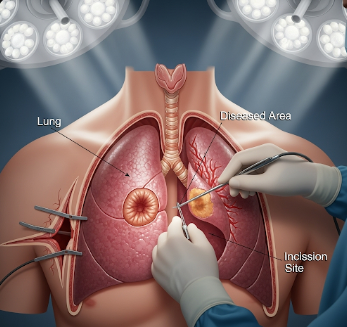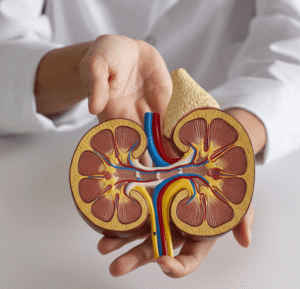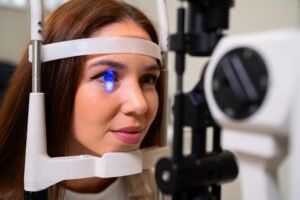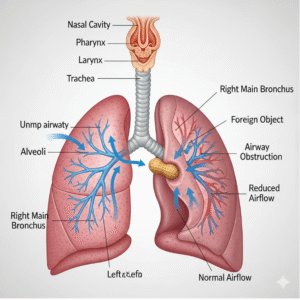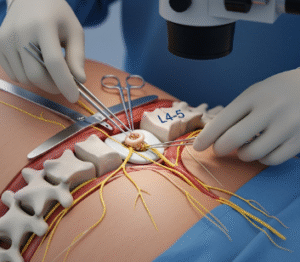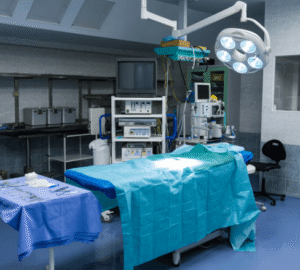Overview
Lung Volume Reduction Surgery (LVRS) is a surgical procedure designed to remove diseased portions of the lung, primarily in patients with severe emphysema or chronic obstructive pulmonary disease (COPD). By removing damaged lung tissue, LVRS improves lung function, breathing efficiency, and quality of life.
In Korea, LVRS is performed by experienced thoracic surgeons using minimally invasive techniques such as video-assisted thoracoscopic surgery (VATS), reducing recovery time and minimizing complications.
Highlights:
- ✅ Removes damaged lung tissue to improve breathing
- ✅ Enhances quality of life in severe emphysema patients
- ✅ Minimally invasive options available in Korea
What is Lung Volume Reduction Surgery (LVRS)?
LVRS involves surgically removing the most diseased portions of the lungs, typically from the upper lobes, to allow healthier lung tissue to expand more efficiently. This reduces hyperinflation, improves diaphragm function, and enhances oxygen exchange.
Indications include:
- Severe emphysema not responding to medical therapy
- Shortness of breath limiting daily activities
- Hyperinflated lungs causing decreased exercise tolerance
Important: LVRS is usually considered after conservative management such as medications, pulmonary rehabilitation, and oxygen therapy has failed. Patient selection is critical to ensure maximum benefit.
What are the benefits?
- Improved lung function: Better airflow and oxygen exchange
- Reduced breathlessness: Patients experience less shortness of breath during activities
- Enhanced exercise tolerance: Increased stamina and physical activity capability
- Quality of life improvement: Daily activities become easier and less tiring
Key benefits highlighted:
- ⚡ Removal of non-functional lung tissue
- ⚡ Expansion of healthier lung areas
- ⚡ Minimally invasive options reduce complications
- ⚡ Potential reduction in the need for supplemental oxygen
Procedure Details
1) How should I prepare for Lung Volume Reduction Surgery?
- Preoperative evaluation: Pulmonary function tests, CT scans, blood tests, and cardiac assessment
- Medication review: Adjust blood thinners and other medications as instructed
- Pulmonary rehabilitation: Breathing exercises to strengthen lung function before surgery
- Consent and education: Understand procedure, risks, expected outcomes, and postoperative care
- Lifestyle preparation: Stop smoking and maintain optimal nutrition for recovery
2) What happens during Lung Volume Reduction Surgery?
- Anesthesia: General anesthesia administered
- Surgical approach: Open thoracotomy or minimally invasive VATS
- Resection: Diseased upper lobe portions are removed
- Re-expansion: Remaining healthy lung tissue is allowed to expand and fill the thoracic cavity
- Closure: Chest is closed with sutures or staples; chest drains placed to remove air or fluid
Duration: Typically 2–4 hours depending on disease extent and surgical approach
3) What happens after Lung Volume Reduction Surgery?
- Recovery monitoring: Intensive monitoring in ICU for respiratory function, vital signs, and chest drainage
- Pain management: Analgesics administered to manage post-operative pain
- Pulmonary rehabilitation: Breathing exercises and gradual mobilization
- Follow-up care: Imaging and pulmonary function tests to assess lung recovery and function
Highlights for post-procedure care:
- ⚡ Monitor for shortness of breath, bleeding, or infection
- ⚡ Chest drains typically removed within a few days
- ⚡ Gradually increase activity as tolerated
- ⚡ Follow rehabilitation programs to maximize lung function recovery
Risks / Benefits
Risks:
- Infection or pneumonia
- Bleeding or air leaks from the lung
- Respiratory failure requiring prolonged ventilatory support
- Rare cardiovascular complications
Benefits:
- Improved breathing and reduced hyperinflation
- Enhanced quality of life and exercise tolerance
- Minimally invasive options reduce hospital stay and recovery time
- Potential reduction in medication or oxygen therapy dependence
Recovery and Outlook
- Hospital stay: Typically 7–14 days depending on recovery and complications
- Full recovery: 6–12 weeks for most patients to regain strength
- Long-term outlook: Improved lung function and reduced breathlessness, especially with continued pulmonary rehabilitation
- Follow-up: Regular imaging, pulmonary function testing, and clinical assessment
Tips for optimal recovery:
- ✅ Follow pulmonary rehabilitation exercises strictly
- ✅ Avoid respiratory infections and exposure to pollutants
- ✅ Gradually resume physical activity as advised
- ✅ Attend all follow-up appointments for lung function monitoring
When To Call the Doctor
- Sudden shortness of breath or difficulty breathing
- Fever, chest pain, or signs of infection
- Excessive bleeding or air leakage from chest drains
- Persistent cough, wheezing, or unusual fatigue post-surgery
Best Korea Option / Process
Korea provides advanced Lung Volume Reduction Surgery care:
- Top hospitals: Experienced thoracic surgeons and specialized pulmonary care teams
- Advanced diagnostics: Preoperative CT, pulmonary function tests, and patient selection
- Minimally invasive surgery: VATS approach for faster recovery and less postoperative pain
- Postoperative care: ICU monitoring, pain management, and pulmonary rehabilitation
- International patient support: Online consultation, appointment scheduling, and telemedicine follow-up
Step-by-step process in Korea:
- Online consultation and preoperative evaluation
- Pulmonary rehabilitation and optimization of lung function
- Lung Volume Reduction Surgery performed using minimally invasive techniques
- Postoperative ICU care, chest drainage, and pain management
- Rehabilitation, follow-up imaging, and pulmonary function assessment

